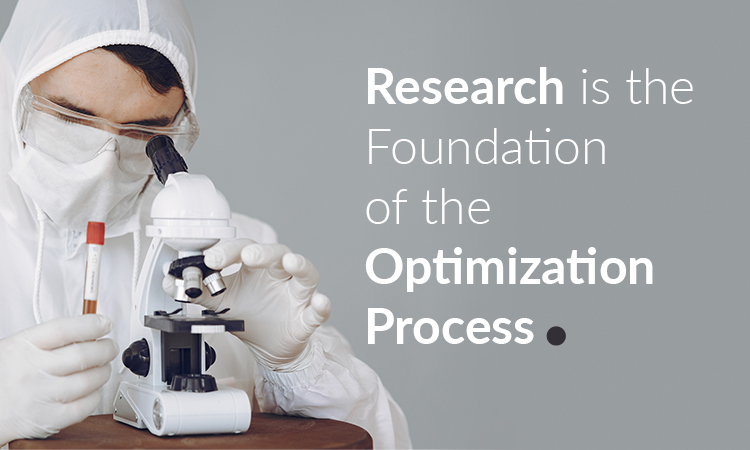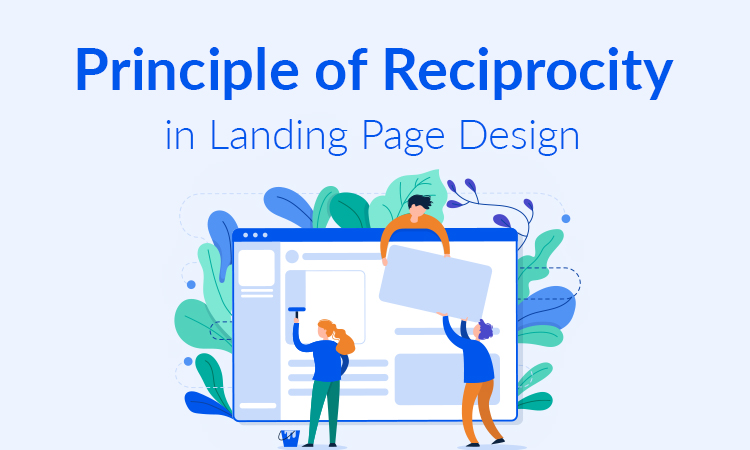Imagine you are trying to optimize a landing page. Where do you start? Most people will google something like “How to optimize landing page” and land on one of “25 hidden tricks for landing page optimization” blogs.
The number one thing I absolutely love about digital marketing is its community. People are sharing everything. Personally, I’m one of those self-made digital marketers who gained knowledge through blogs, webinars, and online courses like CXL. But there are two sides to every coin. Lots of content out there is just clickbait – SEO optimized content without any real value. A bunch of tricks that might make sense while you are reading them, but nobody ever tested them. The person writing about them probably isn’t an expert but some storytelling copywriter. And even if you find a good blog or youtube video, the question stills stands. Where should you start? Do you implement all tips at once? Do you start one by one and test everything out?
Start with Landing Page Optimization
Google might not be a bad answer after all. But instead of googling for tricks, you should start with the research. User research. The research will help you to identify where the problems are and what the most important tasks the customer is trying to complete on your page are.
Optimization or growth process starts with a list of questions like:
- Who are our users?
- What are their top problems (regarding our solution)?
- What do users want?
- What tasks are they trying to complete?
- What are their feelings and objections?
- How are they choosing/making decisions?
- Where is our funnel leaking? Why?
- What leads more people to do X?
- …
And once you list out all the important questions, you can start collecting data to answer those questions. If you know the questions, you understand what piece of information is needed from your analytics tool, and based on that information you can take some action. This is known as Q.I.A. framework.
Research XL
The research process we are using is the Research XL process founded by Peep Laja, the founder of CXL. The research consists of 6 steps:
- Technical Analysis
- Heuristic Analysis
- Web Analytics Analysis
- Mouse tracking Analysis
- Qualitative surveys
- User testing
Together those steps represent a comprehensive and insightful analysis. This is the base for starting the landing page/web optimization process.
1. Technical Analysis
Usually, Technical Analysis is the first step of any web optimization. Firstly, because it doesn’t make sense to fix anything else if the page is not working perfectly in all browsers and on all devices. And secondly, because it offers quick wins. You go to Google analytics and create a custom report with the most important metrics for your business. Those will probably be something like revenue, new leads, conversion rate, avg session duration, page load time, and so on. And then you apply dimensions like browser and device to the report. This way you can quickly compare your site performance and spot the differences. If on one browser version your CR is 7% and on another only 2.5% of users are converting, you most probably have an issue there.
2. Heuristic Analysis
We wrote a dedicated article on Heuristic analysis. To summarize, there are four key principles of the analysis:
Relevancy. If I’m googling a camping tent, is the tent the first thing I see when I land on the page? If not, the conversion rate goes down.
Clarity. Is it clear at first sight what this website is about, who it‘s for, why you should shop here and not somewhere else?
Motivation. What is being done on the page to increase users’ motivation to take action?
Friction. What are the things that make it difficult to take action?
3. Web Analytics Analysis
When looking at the analytics, we start with these 4 questions:
Where are the leaks? At which step in your customer journey is the funnel leaking? If you are an eCommerce shop, the funnel probably looks something like this: the main page, category page, product page, cart, checkout, and so on. So at which step are you losing the highest percentage of users?
Which segments? Segments are where the true power of analytics lies. Compare paid vs. organic traffic, mobile vs. desktop, or returning vs. new users. The best practice is to segment users, based on how they are interacting with your product or service. Users who are using x feature and users who aren’t.
What are users doing? You need to understand what users are doing on the page. If you have the button, you want to know how many users are clicking it. How deep are they scrolling, are they using the comparison tool? One of the biggest mistakes we see is people don’t track everything. If you’re looking to take your web optimization seriously, you have to track all buttons, all links, mouse movement, scroll depth. Everything. If you don’t track, you don’t know who is using it and how it impacts user behavior.
Which actions are correlating with higher conversion? This one highly correlates to the previous one. What are the actions that correlate with more conversion? Once you connect one or two actions with the correlation, you can segment users into those who take action and those who do not. And then you can start thinking about how you can make more people take action.
Further reading on web analytics:
How to set up Google Analytics with Google Tag Manager.
How to set up a Google Analytics account, a complete guide for beginners.
Ultimate 2021 Guide on Google Analytics.
4. Mouse Tracking Analysis
This is an even more in-depth look at the data as opposed to the previous step. The most user-friendly overview of that information are heatmaps like Hotjar or Lucky Orange. They nicely visualize:
- where users are clicking,
- how far down they scroll,
- differences between devices,
- and session replays.
Although you can get most of this information in Google analytics as well. Understanding how far users are scrolling is very important in any web optimization process. Namely, if you have 6 blocks of content for motivating users to take the desired action and an average user only scrolls through 3 blocks, you have to either compact your content or change the design. Strong horizontal lines or background color changes are two typical reasons for the high drop-off percentages. So if you want to get more people to scroll further down, maintaining single (white) background color with lots of arrows and other visual signs showing there is more stuff below is a good starting point for testing.
Session replay is another extremely powerful tool. It is also quite time-consuming, but worth it. When you spot the problem (for instance: we have an issue in that step on that device), go to session recordings, filter out the segment with the problem and start watching the sessions. Sometimes the problem is technical, sometimes people just don’t find the button or maybe you are asking questions in the forum users don’t yet trust you enough to answer.
5. Qualitative surveys
Website analytics and mouse tracking are quantified data. When analyzing that data, we can understand where we have the problem and how big it is. But can we get the answer to why? We have to do qualitative research to understand why we have a certain problem. The 2 main groups you want to do qualitative surveys with:
- users that just bought something or signed up;
- users who came to your site and left without purchasing anything.
A good practice when doing qualitative surveys is to ask open questions. If, for example, you offer multiple-choice questions, you assume you understand the problem, which might not be completely true. Also, try to focus on friction. Questions like: what kind of doubts did you have before purchase or what is the one thing that nearly stopped you from buying?
Analyzing the survey
You have to collect 200 to 300 surveys. In the next step, you have to go through the answers and categorize them. If the question is: what stopped you from buying, the categories might be price, shipping, shitty user service, and so on. Then you count which category got the most votes and this is what you should focus on.
Learn more about Designing a Survey – A List of Good Practices.
6. User testing
The final stage of research is user testing. You have to find representatives of your target group, give them specific tasks and observe them while doing the task. This is an invaluable source of insights. Typically we give them one of three types of tasks:
- Find a specific problem or piece of information. You want to see how users are navigating the page, and how easy it is to find something specific. Task example: if you are an eCommerce store selling fitness items, instruct your user to find something like 5 pieces of stretch resistance bands for women.
- Broad task. Understand what is most appealing to users. And again, see how users are navigating to the page. Task example: find something you like on the page.
- Testing the funnel. See if there is any friction when users are trying to purchase an item. Just make them complete the purchase and see if they have any problems doing it.
Rank Problems and Build Hypotheses
If you do all of the above steps, you probably don’t need a “25 tricks to optimize the landing page” blog. By now you have surely identified a number of problems that need fixes. Start your website optimization by ranking problems from the smallest to the biggest. Decide which ones are most important to solve, build a feasible hypothesis and design the experiments to test them out. Or in other words, your Web optimization journey has just begun.
Check some of our other tips for growth or simply get in touch and we’ll be happy to come back to you with some tips for growth!










![InVideo vs Wave.video - Comparison [2023]](https://goodish.agency/wp-content/uploads/2023/08/low_small-1024x683.jpg)
